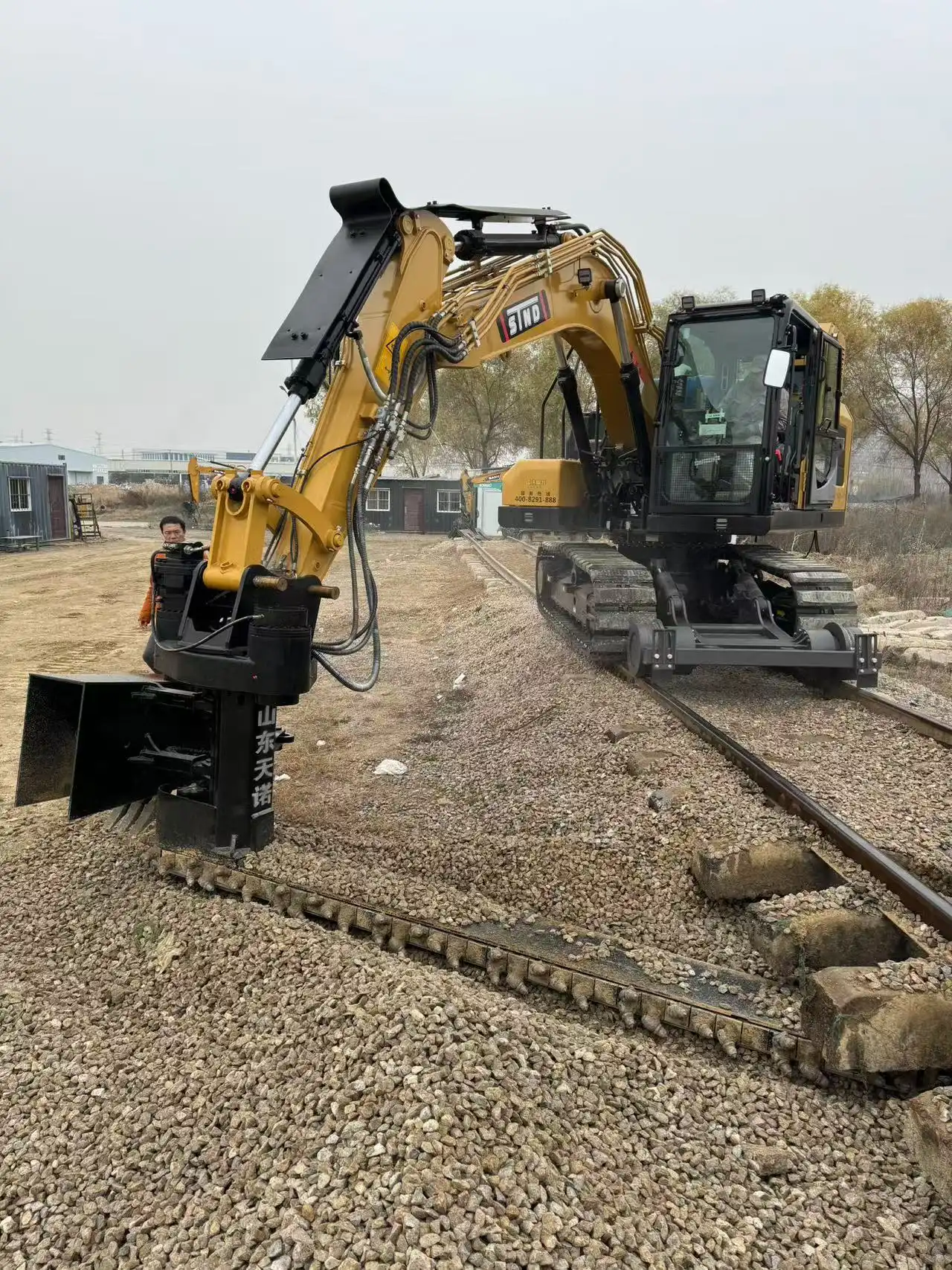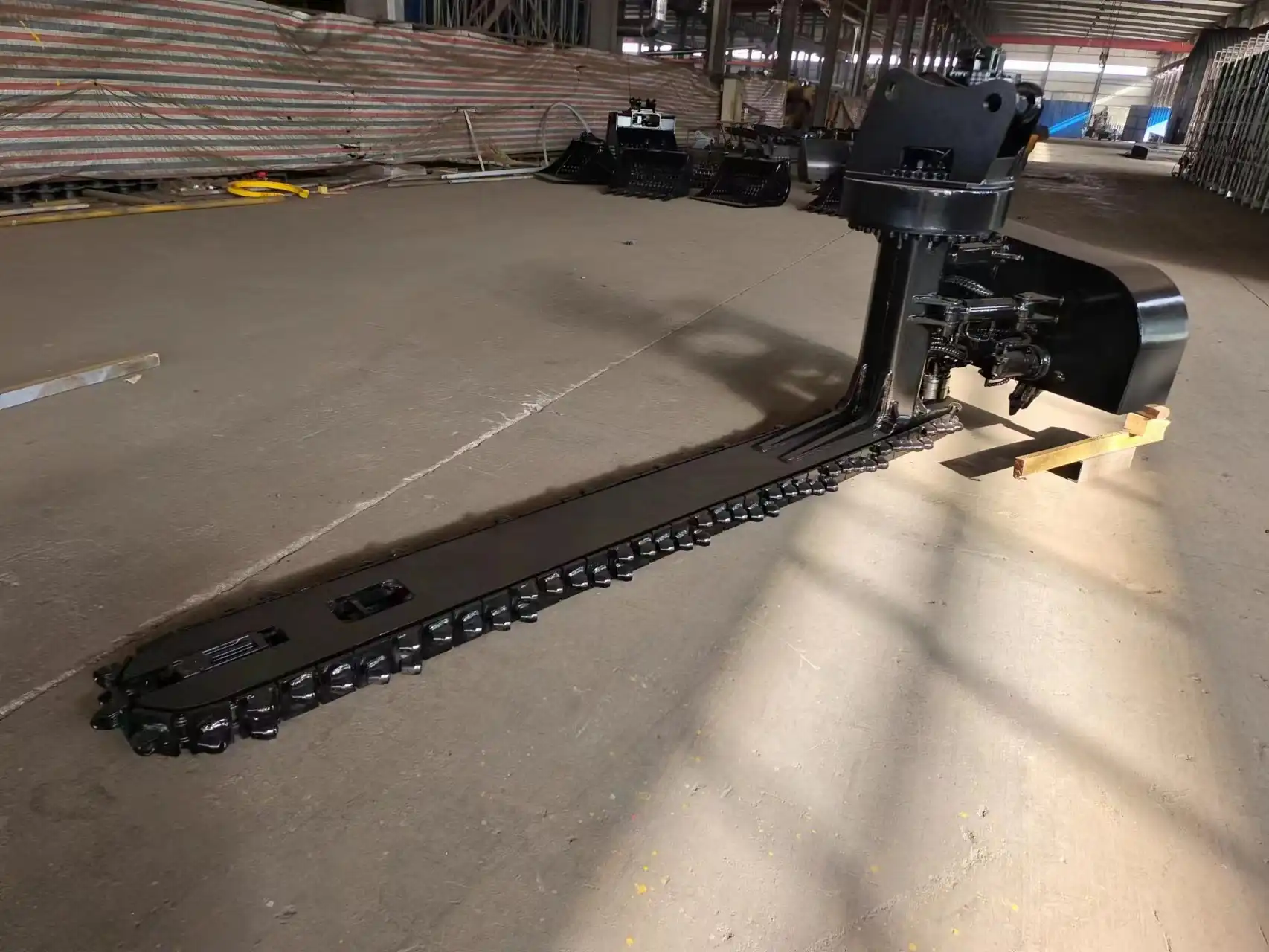Why Are Ballast Undercutters Essential for Railway Maintenance?
Railway systems worldwide depend on robust maintenance practices to ensure safe, efficient operations. Among the most critical equipment in this arsenal is the rail-road ballast undercutter excavator, a specialized machine that addresses fundamental challenges in track maintenance. These powerful machines serve as the backbone of modern railway maintenance programs by systematically removing contaminated ballast material from beneath railway tracks, cleaning it, and restoring optimal track conditions.
Railway ballast deteriorates over time due to constant loading from passing trains, weather exposure, and contamination from surrounding soil and debris. When ballast becomes fouled with fine particles and loses its angular properties, it transforms from a stable foundation into a problematic substrate that compromises track integrity. This degradation directly impacts drainage capabilities, reduces load-bearing capacity, and accelerates wear on railway infrastructure. Professional maintenance teams recognize that addressing these issues proactively through undercutting operations prevents costly emergency repairs and service disruptions while extending the operational lifespan of railway assets.

Maintaining Track Stability
Understanding Ballast Degradation and Its Impact
Track stability fundamentally relies on the mechanical properties of railway ballast, which provides essential support and load distribution for railway infrastructure. Over operational periods, ballast materials undergo significant changes that compromise their effectiveness. The angular stones that initially provide excellent interlocking characteristics gradually become rounded through constant mechanical loading and weathering processes.
This transformation creates cascading effects throughout the track structure. When ballast loses its angularity, the interlocking mechanism between individual stones weakens considerably. Fine particles, commonly referred to as "fines," accumulate within the ballast matrix, creating a concrete-like consistency that inhibits proper drainage and reduces the ballast's ability to distribute loads effectively across the track foundation.
The Role of Undercutting in Restoring Structural Integrity
Professional undercutting operations address these fundamental stability challenges through systematic ballast renewal. The rail-road ballast undercutter excavator removes contaminated material from critical areas beneath the track structure, typically reaching depths of up to 800mm depending on specific maintenance requirements and track conditions.
This process restores the essential mechanical properties that ensure track stability. Fresh, angular ballast provides superior load distribution capabilities, effectively transferring forces from passing trains to the underlying track foundation. The restoration of proper ballast characteristics significantly reduces track settlement and geometric deviations that would otherwise require frequent corrective maintenance interventions.
Long-term Stability Benefits
Railway operators who implement comprehensive undercutting programs experience measurable improvements in track performance metrics. Properly maintained ballast sections demonstrate enhanced resistance to lateral movement, reduced vertical settlement rates, and improved overall geometric stability over extended operational periods.
These stability improvements translate directly into operational benefits, including reduced maintenance frequencies, improved ride quality for passengers and freight, and enhanced safety margins for high-speed operations. The investment in systematic undercutting operations provides substantial returns through reduced lifecycle costs and improved asset utilization rates.
Enhancing Drainage Performance
Critical Importance of Effective Track Drainage
Water management represents one of the most challenging aspects of railway maintenance, directly influencing track stability, component longevity, and operational safety. Effective drainage systems prevent water accumulation within the track structure, which can lead to ballast contamination, subgrade weakening, and accelerated deterioration of track components.
When ballast becomes fouled with fine particles, its permeability decreases dramatically. Water trapped within the track structure creates hydrostatic pressures that destabilize the ballast matrix and contribute to pumping conditions during train passage. These conditions accelerate ballast degradation and create maintenance challenges that compound over time without proper intervention.
Undercutting's Role in Drainage Restoration
Ballast undercutting operations specifically target drainage-related issues by removing impermeable fouled material and replacing it with clean, well-graded ballast that facilitates proper water flow. The systematic removal of contaminated ballast eliminates the primary barrier to effective drainage, restoring the track structure's ability to manage water efficiently.
Modern rail-road ballast undercutter excavator systems incorporate screening capabilities that separate reusable ballast from fine contamination. This approach maximizes material utilization while ensuring that only clean, properly graded ballast returns to the track structure. The result is a renewed drainage system that effectively manages water flow and prevents future contamination cycles.
Preventing Water-Related Track Problems
Proper drainage maintenance through undercutting operations prevents numerous water-related track problems that can severely impact railway operations. These include ballast pumping, subgrade instability, and accelerated corrosion of steel track components. By maintaining optimal drainage characteristics, railway operators avoid costly emergency repairs and service disruptions associated with water-damaged track sections.
Enhanced drainage performance also contributes to improved track geometry stability during adverse weather conditions. Tracks with properly functioning drainage systems maintain their geometric integrity during heavy rainfall events and freeze-thaw cycles, reducing the need for emergency maintenance interventions and ensuring consistent operational reliability.

Extending Track Lifespan
Comprehensive Asset Life Extension Strategy
Railway infrastructure represents substantial capital investments that require strategic maintenance approaches to maximize operational lifespan and return on investment. Ballast undercutting operations serve as a cornerstone of comprehensive asset management strategies, addressing multiple degradation mechanisms that limit track longevity.
The systematic renewal of ballast through undercutting operations addresses the root causes of track deterioration rather than merely treating symptoms. This proactive approach prevents the progression of minor maintenance issues into major structural problems that require extensive reconstruction efforts and significant capital expenditure.
Preventing Premature Component Replacement
Well-maintained ballast significantly reduces stress concentrations on track components, extending the service life of rails, ties, and fastening systems. When ballast provides proper support and load distribution, track components operate within their design parameters, experiencing reduced fatigue loading and wear rates.
Professional maintenance teams utilizing advanced rail-road ballast undercutter excavator technology can selectively address problem areas while preserving sections in good condition. This targeted approach optimizes maintenance resources and prevents unnecessary disturbance of stable track sections, contributing to overall system longevity.
Economic Benefits of Proactive Maintenance
Railway operators implementing systematic undercutting programs realize significant economic benefits through extended asset lifecycles and reduced emergency maintenance requirements. Proactive ballast maintenance costs substantially less than reactive approaches that address problems after they've caused operational disruptions or component failures.
The investment in regular undercutting operations provides measurable returns through reduced track replacement cycles, decreased maintenance material consumption, and improved operational reliability. These benefits compound over time, creating substantial cost savings that justify the initial investment in specialized maintenance equipment and operational programs.
FAQ
①What is a ballast undercutter and how does it work?
A ballast undercutter is specialized railway maintenance equipment that removes contaminated ballast material from beneath tracks. It excavates fouled ballast, screens out impurities, and returns clean material to restore proper track support and drainage.
②How often should ballast undercutting operations be performed?
Undercutting frequency depends on traffic volume, track conditions, and environmental factors. Most railways perform undercutting operations every 15-25 years on main lines, with spot treatments as needed for problem areas.
③Can undercutting operations be performed while maintaining service?
Modern undercutting equipment can work during brief track possession windows, minimizing service disruptions. However, major undercutting projects typically require extended track closures for safety and efficiency.
④What are the signs that indicate undercutting is needed?
Key indicators include poor drainage, frequent tamping requirements, track geometry problems, ballast pumping, and visible contamination of ballast material with fine particles or vegetation.
Railway maintenance professionals worldwide recognize ballast undercutting as an essential component of comprehensive track maintenance programs. These operations address fundamental challenges related to track stability, drainage performance, and infrastructure longevity that directly impact operational safety and economic performance. Modern rail-road ballast undercutter excavator technology provides railway operators with the capabilities needed to maintain world-class infrastructure standards while optimizing maintenance costs and resource utilization.
Tiannuo's advanced Rail-Road Ballast Undercutter Excavator offers exceptional performance with customizable undercutting depths up to 800mm and working widths from 500mm to 1200mm. Our equipment provides adjustable working speeds from 0.5 to 1.2 km/h, ensuring optimal productivity for various maintenance scenarios. Built with high-strength steel and wear-resistant alloys, these machines integrate seamlessly with rail-road excavators and offer both manual and automatic control options to meet diverse operational requirements.
For railway operators seeking to enhance their maintenance capabilities and extend track asset lifecycles, professional consultation and equipment selection guidance are invaluable. Understanding specific operational requirements and matching them with appropriate undercutting solutions ensures optimal performance and return on investment. To learn more about our comprehensive range of railway maintenance solutions and how they can benefit your operations, welcome to contact us: rich@stnd-machinery.com.
References
- Railway Track Engineering, 5th Edition. Authors: Jeffrey S. Mundrey and Satish Chandra. Published by McGraw-Hill Education, 2018. Chapter 12: Ballast Maintenance and Renewal Techniques.
- International Railway Journal, Volume 63, Issue 8. "Advanced Ballast Undercutting Technologies for Modern Railway Maintenance." Published by Simmons-Boardman Publishing, August 2023.
- Proceedings of the Institution of Mechanical Engineers, Part F: Journal of Rail and Rapid Transit, Volume 237, Issue 4. "Performance Analysis of Ballast Undercutting Operations on Track Stability and Drainage." Published by SAGE Publications, April 2023.
- Railway Gazette International, Special Maintenance Issue. "Ballast Management Strategies for Enhanced Track Longevity." Published by DVV Media International, September 2023.
- Transportation Research Record: Journal of the Transportation Research Board, Volume 2677, Issue 3. "Economic Benefits of Proactive Ballast Maintenance in Heavy Haul Railway Operations." Published by SAGE Publications, March 2023.
About Author: Arm
Arm is a leading expert in the field of specialized construction and railway maintenance equipment, working at Tiannuo Company.

